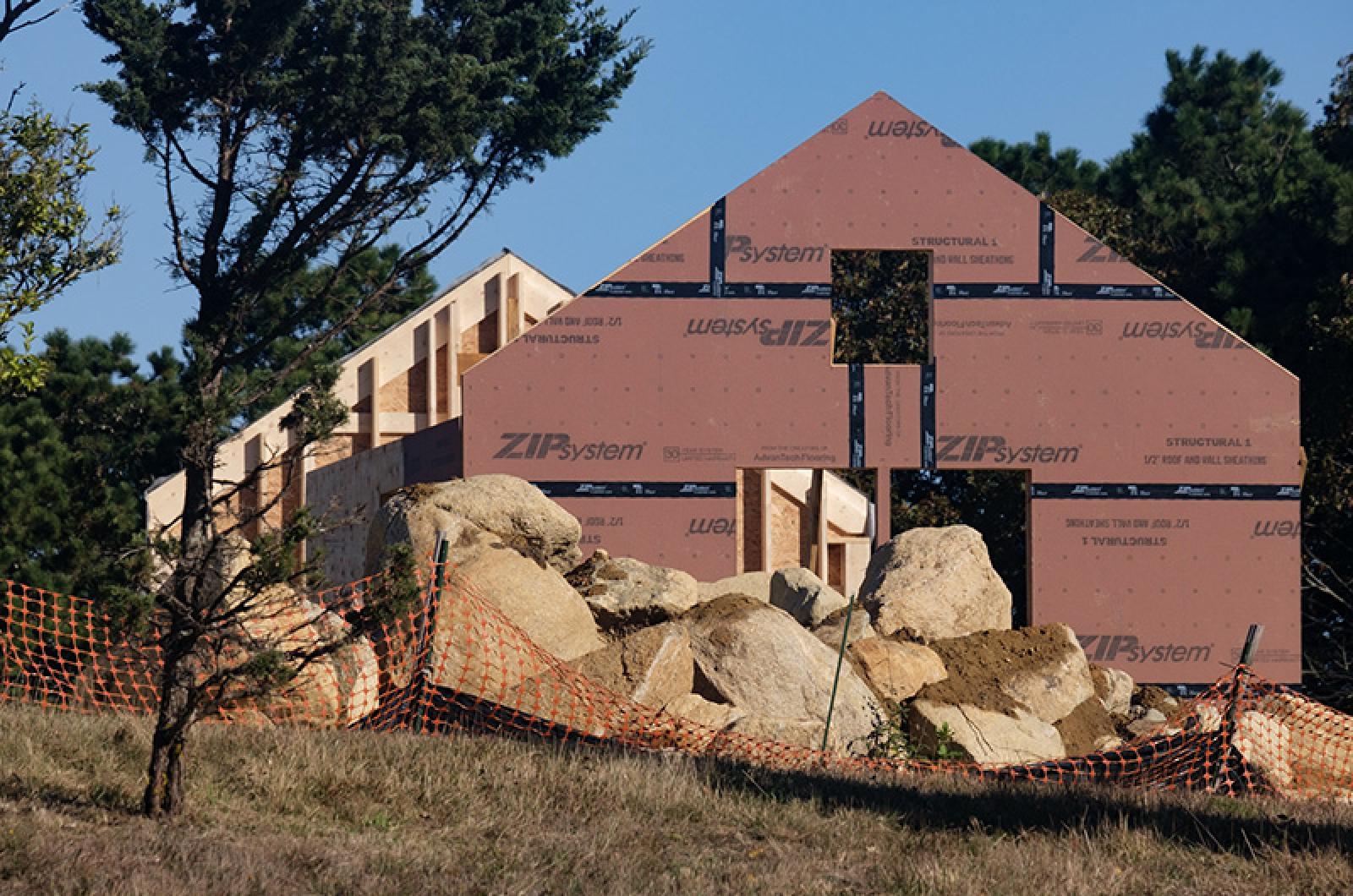When the Martha’s Vineyard Commission was created by an act of the legislature 46 years ago, it was not so much a reaction to development as a concern for what many saw coming, as the Island began to change from a quiet backwater to a more upscale summer resort.
Today, as the Island experiences yet another real estate and construction boom, the MVC’s broad authority to monitor and sometimes put the brakes on development that could threaten the unique ecological, historical and cultural values that make the Island important to the commonwealth as a whole could not be more relevant.
Fueled by the pandemic in ways no one could have anticipated, the Island housing market is soaring, with buyers rushing in to snap up properties large and small, paying competitive prices and pushing up values that were already overheated.
September alone saw record sales numbers come through the registry of deeds. The average sale price of a single-family home on the Island is now $1.5 million. A quick scan of multiple listings for the Vineyard shows that the brisk transaction activity appears to be continuing without letup.
Island building inspectors are also reporting a surge in residential construction projects, only confirming what is obvious from the sight and sounds of worksites all around the Island. Good luck getting a plumber or electrician these days on the Vineyard, especially if it’s for a small job. Contractors are booked weeks and months out, as home renovation projects soar.
This flurry of activity comes amid data showing a steady increase in the size of homes being built on the Island. MVC senior planner Bill Veno told the Gazette recently that the number of homes over 4,000 square feet has doubled in the past two decades.
The impacts of the latest land rush on the Island can already be felt in myriad ways. Inflated real estate prices are putting home ownership out of reach for many year-round families. The Island’s wastewater plants have become overburdened. Ferries are crowded and traffic on Island roads is rising. And there are continuing troubling signs about the health of the Island Great Ponds, the canaries in the coal mine for overdevelopment.
From its beginnings, the Martha’s Vineyard Commission was intentionally given broad authority and extraordinary power to consider the effects of development on such things as the water supply, open space, traffic, transportation, housing and, yes, the character of the Island. Its enabling legislation also charges the commission with “promoting the enhancement of sound local economies.”
But who could disagree that at the moment, the real estate and construction industries on Martha’s Vineyard need little promotion?
In light of the favorable economy for the trades, it seemed peculiar timing for a group of Vineyard builders to mount a vocal protest of the MVC’s plan to tighten the rules for sending large development projects to the commission for review.
The so-called development of regional impact (DRI) checklist will now include smaller subdivisions, and more commercial projects. Partly in response to the outcry from the Martha’s Vineyard Builders Association, a trade group that includes some 120 contracting companies, a controversial item that would have required review of mega-mansions, was shelved, at least for now.
The builders called the changes over-reach by the commission, saying there is plenty of oversight at the local level.
But it was the very need to protect the kinds of Island resources like air and water that do not respect town borders that prompted the creation of the Martha’s Vineyard Commission in the first place. And today, oversight by this body — elected and appointed to represent each of the Island towns — is more necessary than ever.
That the commission’s decisions are not always popular is not the same as over-reach.




Comments
Comment policy »